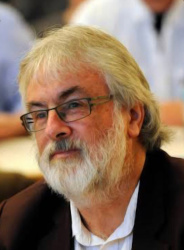We need to talk about suicide and euthanasia
It is extraordinarily difficult to discuss suicide and euthanasia at the same time. But there is an urgent conversation to be had: what are the implications for New Zealand’s suicide prevention programme of introducing the End of Life Choice Bill?
It can seem as if suicide and euthanasia are quite separate issues. On the one hand, suicide is devastating: a mental health tragedy brought on by a range of complex issues. These issues can be addressed with ongoing support and education. Suicide is seen as irrational, and avoidable.
On the other hand, euthanasia can seem vastly different: a measured, compassionate response for seriously ill and suffering people. Such people may be well-supported, with stable mental health. Euthanasia – though still difficult - is seen here as rational and considered.
From this viewpoint, conflating euthanasia with suicide can be seen as detracting from the resilience and courage shown by chronically suffering people facing death; and it can confuse the urgent discussion about suicide prevention, and the under-resourcing of mental health care. At worst, it can look like the co-opting of one serious issue to serve the purposes of another.
This is the stark difficulty of this conversation. Suicide and euthanasia cover a vast range of individual circumstances, with all the accompanying pain and grief.
Nevertheless, the conversations about suicide and euthanasia are not as separate as they may seem. We must address the real risk that through legalising euthanasia - and assisted suicide, in the case of this EOLC Bill - we will exacerbate our suicide problem more generally.
Firstly, the public acceptability of euthanasia in New Zealand depends on perceived tight safeguards. We distinguish euthanasia from suicide by focusing on the irresolvable nature of the suffering that accompanies serious illness. But overseas precedents show that some people are accessing euthanasia for suffering that is not necessarily irremediable. This blurs the boundary between euthanasia and general suicide.
In Oregon, for example, the 2018 report on assisted dying shows that concern about pain is not even in the list of the top five reasons for accessing assisted dying. But 54% of people name becoming a burden on caregivers as their top reason. 5% of people even named the financial implications of treatment. The top reasons were the loss of autonomy and independence (91.7%) and decreasing enjoyment of daily activities (90.5%). From the Netherlands, Professor Theo Boer - longtime member of the Dutch Euthanasia Review Committee - referred to cases where a large part of the patient’s suffering, alongside their serious illness, consisted of being aged, lonely, or bereaved.
I am not belittling these difficult and heart-breaking kinds of suffering. But some people are choosing euthanasia primarily due to a lack of good care and societal support in adjusting to their chronic or terminal illness. They name relational, societal, and even financial reasons, rather than purely irremediable ones.
People were free to choose their reasons, of course. But such choices are made in conversation with the kinds of options we see, or don’t see, around us. And some may have chosen differently if they had had better support, which is a tragedy. We separate cases out into ‘rational euthanasia’ and ‘irrational suicide’; but many cases exist against the same backdrop of a lack of good care in dealing with the complexities of illness.
If we pass the EOLC Bill, with our deficiencies in disability support, high rates of elder abuse, and prevalence of mental health illness, we will be offering a solution, not a treatment, to some people whose difficulties might otherwise be successfully addressed.
Secondly, even if we believe we can keep our criteria for euthanasia and assisted suicide well contained, and distinct from ‘general suicide’, no other jurisdiction has so far succeeded. Those who have legalised forms of assisted dying have widened the criteria for euthanasia and assisted suicide into broader definitions of suffering, some including psychological suffering. Even the possibility of a ‘completed life’ for over 75s is now being proposed in the Netherlands. Is that suicide, or euthanasia? It’s suicide, under the guise of widened criteria for euthanasia. This seems so far removed from a seriously ill person in pain; but that seriously ill person is where every one of these jurisdictions began. When you accept euthanasia as a fundamental right to die, it seems impossible to halt a logical progression of increased eligibility.
Thirdly, one of the main reasons given for legalising euthanasia is that this will prevent people with terminal illnesses or other grievous and irremediable suffering from taking their own lives. But the evidence does not support that conclusion. A 2015 study in the United States showed that legalising physician assisted suicide was neither associated with a reduction in non-assisted suicide rates, nor with an increase in the mean age of non-assisted suicide.
In the Netherlands, non-assisted suicides have continued to rise despite the massive increase in the numbers of people accessing assisted suicide, with a 14.3% increase between 2002 and 2017. Prof Theo Boer states that ‘the rise was all the more significant since in exactly that same period we made assisted dying possible for the categories of people that do commit suicide.’ He asserts that the assumption that euthanasia will lead to lower suicide rates is not supported by the numbers. In Oregon, too, assisted suicide has been available since 1997, and the number of non-assisted suicides is 43% higher than the national average.
Euthanasia does not lead to lower suicide rates. And some evidence suggests a correlation between assisted suicide and non-assisted suicide that we would be foolish to ignore.
Finally, the proposed safeguards are inadequate. One proposed amendment will eliminate anyone with mental health issues from eligibility. But if even those closest to a suicidal person cannot accurately predict their suicide and are left reeling, how can we expect doctors to infallibly diagnose mental health issues that are contributing to a request for euthanasia? Terminal illness has high rates of accompanying depression. Why would we expect the depressed person who is looking for ‘solutions’ to be honest, necessarily? And how would we know if we were wrong?
Another possible amendment to the EOLC Bill will allow only terminally ill people to access it. Even if you believe that such a safeguard will permanently remain, it is flawed. Terminally ill people will be eligible for euthanasia and assisted suicide, but may access it for less obvious reasons that could otherwise have been addressed. Furthermore, sufferers of certain types of chronic illness may be eligible for the bill if they choose to stop taking their medication, and become terminal.
Simply put, there is a genuine danger that the introduction of euthanasia and assisted suicide will confuse our suicide prevention efforts. It sends a message that premature death is an acceptable way of dealing with significant suffering. As one NZ GP stated in their EOLC Bill submission, ‘…we are telling youth that suicide is not the answer and yet, saying to our disabled and terminally ill that it is. Those youth that have talked to me about this issue have mentioned the double standard.’ And US Professor of Sociology Julie Phillips notes that the tolerance of suicide as benign begins with ‘suicide, or even assisted suicide, in the end stages of a fatal disease.’
Consider how we will manage the media reporting of people who have accessed state-sanctioned euthanasia and assisted suicide, in light of the restrictions on suicide reporting. Will all our members of society be able to tell the difference? After all, when the media cover assisted dying stories, they always accompany the story with suicide prevention contact details.
This is difficult territory. It is hard to answer the truly heart-breaking cases. But trying to maintain safe distinctions between all cases of euthanasia, all cases of assisted suicide, and all cases of suicide is like trying to cut through water. Things fall apart; the centre cannot hold, and it doesn’t. The boundaries move, the overlap increases, and society shifts quickly to accept the attitude that death is an acceptable solution to many forms of suffering.
Given the efforts we are making with suicide prevention, introducing euthanasia and assisted suicide is far too great a risk. It cannot be sufficiently controlled. We need to invest the money, instead, into further resourcing quality palliative care that is available to everyone. This is the safer and more coherent approach to address our problems with dying.
ends


 Gordon Campbell: On The Coalition’s Awful, Not Good, Very Bad Poll Results
Gordon Campbell: On The Coalition’s Awful, Not Good, Very Bad Poll Results Ian Powell: Policy Vacuum Enables For-profit Corporate General Practice Ownership By Stealth
Ian Powell: Policy Vacuum Enables For-profit Corporate General Practice Ownership By Stealth Gordon Campbell: On Iran Killing Its Rappers, And Searching For The Invisible Dr. Reti
Gordon Campbell: On Iran Killing Its Rappers, And Searching For The Invisible Dr. Reti Peter Dunne: MPs Unusually Quiet On Pay Rise
Peter Dunne: MPs Unusually Quiet On Pay Rise Ian Powell: Cuba And New Zealand: A Relationship Worthy Of Strengthening
Ian Powell: Cuba And New Zealand: A Relationship Worthy Of Strengthening Gordon Campbell: On bird flu, AUKUS entry fees and Cindy Lee
Gordon Campbell: On bird flu, AUKUS entry fees and Cindy Lee